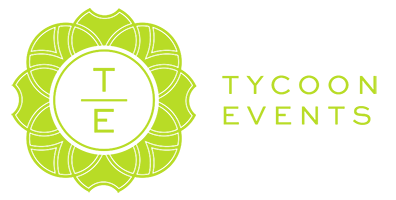
‘When was the last time, you did something for the first time?’ — Unknown
Ask us a year ago, and we’d have to take a moment to think about it. Ask us today, tomorrow or even yesterday, and well… we don’t have enough fingers to count all of the firsts. That’s kind of the name-of-the-game in this 2020, COVID-world. And while all firsts do come without their set of challenges (some, definitely harder than others), we all know that the greatest reward is often in the learnings that reveal themselves along the way.
Afterall, we truly ‘don’t know, what we don’t know, till we know’ … ya know?
So… without further ado, we’re excited to announce that we’ve officially completed our FIRST Virtual Event!
Of course, you may be wondering about some of the other virtual events we’ve been working on, that include a variety of virtual holiday parties – to – conferences – to – committee meetings. They’re still in the works, and happening soon.
But…. the title of First Official, Completed Virtual Event belongs to none other than the University of Alberta’s Virtual Open House that took place from Thursday October 15 – Saturday October 17, 2020! After reading this, go take a gander on how it went.
Hooray!
So, now it’s time to pause and reflect so that all those crucial first-timer learnings are captured. And, since it’s kind of in our nature to share what we’ve learned in hopes of growth for one another, for our peers and for our industry, we thought we’d take you along for the journey of reflection and share a few lessons learned in our experiences with the virtual event landscape, so far (both complete and in-the-works).
Here’s our Top 5 Takeaways and Lessons Learned:
- Planning Time & Resources
Whether the event has been held before, or not, the virtual environment requires a fresh, new approach. With that, comes appropriate planning time and oftentimes additional resources (people and hard-costs).
When thinking about planning times, considerations include:
- Lead time for platform development. Many platforms require a min. of 6-8 weeks to develop custom elements.
- Onboarding for your team, speakers, or exhibitors. It’s important to consider training (info sessions, how-to documents, etc.) for both the backend of the platform and for the day-of experience.
- Shipping and delivery times for any home delivered items.
- Marketing and promotion of your event. Depending on the industry, the virtual event market is quite saturated and can often require more work in educating and informing your audience on why they should attend.
When thinking about resources, considerations include:
- The cost of the virtual event platform, itself. We’re seeing a common range of $6K – $30K+ for an integrative platform with a focus on a smooth user experience and engagement features. Rule-of-thumb, the more customized and immersive platform, the higher the costs.
- A/V support. Professional A/V support is critical to any live-streamed event components (or pre-recorded for that matter). Hiring a team that’s familiar with the virtual space can make a world of a difference in the final quality of your event, while also supporting any technical requirements along the way.
- Graphic design. While hard-copy printed materials may be less of a focus for virtual events (although, don’t forget about the opportunities for tangible support items in your home delivered items), there are often additional opportunities to design your virtual space that will require the support of digital graphic design.
- Event management and coordination. While there seems to be a common belief that the transition from live to virtual takes less time and less work, this couldn’t be further from the truth. There are a ton of pieces that take place behind the scenes from liaising with the virtual platform provider, to A/V, to vendors, or speakers, staff, etc. Our job is to make it look easy, but virtual events are far more challenging than live events for so many reasons. It’s important to work with someone who lives, eats, and breathes virtual events and budget for the additional hours required to get the job done right.
- Re-evaluating and Redefining Success
Similar to the sentiment above, whether or not, the event has been held before, it’s important to consider that success looks different for a virtual event. In establishing a baseline for your virtual events, consider that attendance may not be the only indicator.
Even with some of the best platforms and most engaging activities around, there is still some degree of virtual burnout. But on the contrast of that, there is also the ability to capture your audience in multiple occurrences or over a longer period of time through on-demand content. Also, while the day-of numbers may be less than what could be expected in-person, accessibility is opened to new demographics and locations of attendees who likely wouldn’t have been able to tune in otherwise.
Virtual also opens the doors to international or potentially more prestigious speakers. It also allows you to expand your talent base without the considerations of travel and accommodations. Maybe the day-of fee is more accessible and the ROI can be attributed to the longer terms visibility of the content.
A few other indicators to consider, include:
- Engagement and participation. What does this look like, based on your goals and what you want guests to take-away from the event or the actions you want them to take afterwards.
- Longevity of the content. Can your content can be repurposed as a long-standing resource or reference. How are you promoting and tracking future interaction with the resources you’ve created.
- Direct contact. Based on the functionality and analytics of the platform, virtual events can do a much better job of capturing the individualized needs, interests, or questions of each guest that can be an important key to further engagement and follow up after the event.
- Positive feedback and sharing. In-the-moment reviews and social sharing features of the virtual platform make it easier to facilitate guest participation in spreading the message with their networks and receiving feedback. These are important measures of success to capture.
- Creating a Virtual Venue
When planning a virtual event, it’s important to keep in mind that your platform becomes your venue. As we began to think about all of the possible touchpoints and opportunities for engagement in a physical venue, we wanted to replicate those same meaningful connections within our available virtual capabilities.
This is where virtual event platforms play such a critical role. They become the hub, a shell if you will, for all event related content, that guests can explore and facilitate the types of interactions that they’re looking for, all in one place.
Guests can gain a consistent look and feel (with the opportunity for immersive VR like environments with some platforms) to explore the “space” and get comfortable, prior to jumping in to the sessions of the event.
Is there a community channel, resource centre or online store that enhances the experience? It is important to allow our guests to create their own tailor-made experience with the ability to customize the user journey based on their specific interests.
- Incentivizing Participation
Engagement, engagement, engagement. When you’re at an in-person event, there’s a level of implied responsibility to meet and chat with those around you during scheduled breaks or programmed activities. But, when we’re behind a screen, there’s nothing stopping us from walking away or tuning out. Not to mention, unless guests are encouraged to participate, it can be a bit awkward or intimidating to be the first one in a chat box and if no one responds, the conversation ends before it begins.
We can facilitate, encourage and even reward this type of participation as long as it is a part of our event plan. Ensuring there are moderators to promote conversation during coffee breaks or break out sessions is key. Gamification capabilities will continue to be among our list of must haves for encouraging social interactions, activity participation or session attendance to keep our attendees engaged and motivated to get the most out of their online event experience.
- Guidelines, Expectations and Communication
Not unlike in-person events, providing guidelines for what to expect and communicating how to get the most out of the experience is a critical component to the success of an event.
While it’s important to choose a user-friendly platform that is easy to use and allows for directional cues throughout the event experience, guests, speakers, vendors and exhibitors don’t have the luxury of following social cues that would be visible in a physical setting.
In this case, creating clear guidelines, setting expectations and communicating the ideal journey to achieving the intended experience, needs to be top-of-mind.
Do they need to download an app, create a profile and have their mobile handy? Should they listen to a podcast, download a workbook or familiarize themselves with speakers in order to participate in the event activities (polls, QA’s or networking)? Should they dress up or prepare to be on camera?
What are the speaker, exhibitor or moderator roles in achieving a successful event. How can they help in promoting or marketing the event. Do they have the right information, messaging and clear outlines on the expectations for engaging with event guests? Do they have a clear outcome in mind and are they aware of the goals of the event?
As event planners, we’ll continue to advocate for any and all opportunities to help inform and assist all event stakeholders with the details that they need to enhance the guest experience, just as we would in person.
And truly, the list goes on. Though only 5 lessons learned for now, they’re bound to get you started on the right path or thinking differently about your virtual event design!
We’ve also connected with some of our industry colleagues who have had to adapt to our new virtual world. We’ve asked them to share some of the challenges they have faced, their learnings, and how they adapted to a new way of doing things.
Check out our social media #TrialsAndTribulations series where vendors tell all about their first-timer learnings in the links below.
Thanks for reading!
– Your Tycoon, Lyndsey XO
